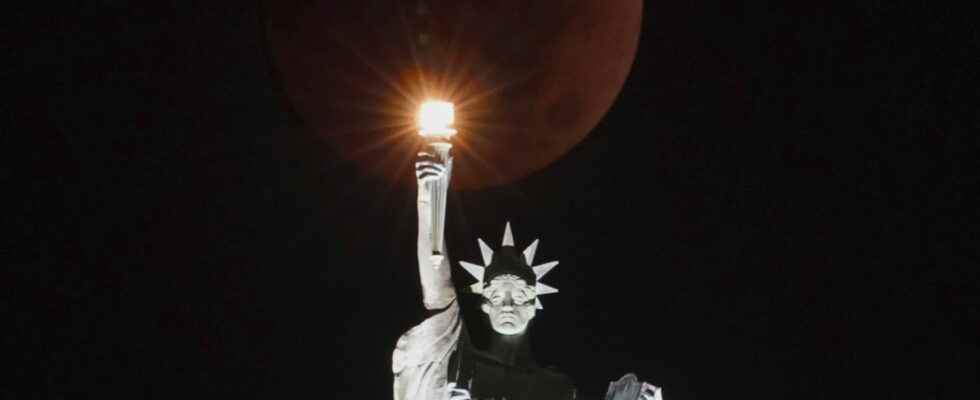MOON ECLIPSE. This Tuesday, November 8, 2022, a total lunar eclipse was visible from northeastern Europe, the United States, the Pacific and northeastern Asia. The most beautiful pictures.
[Mis à jour le 8 novembre 2022 à 19h02] The last lunar eclipse of the year 2022 was visible on Tuesday, November 8 from northwestern North America, northeastern Europe, northeastern Asia and the Pacific. The France Metropolitan could not enjoy the celestial spectacle since the Moon was “already lying down at the time of entering the penumbra” and got up “after leaving the penumbra”, indicates the Institute of Celestial Mechanics and Calculation of Ephemerides (IMCCE). New Caledonia and French Polynesia, on the other hand, were able to partially enjoy the spectacle at moonrise. Discover the lunar eclipse pictures from November 8, 2022:
The next fully visible lunar eclipse in mainland France will not take place before December 20, 2029…Scientists predict an incredible show all night long!
The eclipse of moon which occurred on the night of Monday May 16, 2022 was the only total lunar eclipse of the year 2022 visible in Europe. Also observable from the east of North America, from South America and from Africa, the passionate photographers had a great time immortalizing the astronomical phenomenon in its entirety, which lasted 1 hour 24 minutes. Its sighting in France was only partially visible during its total phase, from 5:29 a.m. to 6:09 a.m., when daylight broke in Paris.
It is important to point out that the astronomical phenomenon of the lunar eclipse is only possible when the Moon is full. A lunar eclipse can only occur when the Moon is at
If the sky is clear, there is no problem observing a lunar eclipse with the naked eye, without any danger (unlike a solar eclipse) and without special equipment. We advise you to position yourself in the direction of the clear horizon and to turn towards the southwest. The place of observation must be located far from any light pollution (at the top of a hill, on a beach etc…) As for a super moonin case you find yourself in an area where clouds obscure its visibility, you can arm yourself with your telescopeof yours binoculars or a pair of astronomical glasses to better observe the lunar eclipse.
For those who wish to immortalize the phenomenon, you can also bring a standard 50 mm lens as well as longer focal length lenses (between 200 mm and 2,700 mm on a full frame sensor). The important thing is to be able to have a tripod to avoid camera shake. The use of a telephoto lens is obviously ideal so that the moon fits entirely into the frame, but for photographers with a short focal length, you can make an eclipse trail (successive superimpositions of the different phases of the eclipse on the same photograph). Given the low light during the lunar eclipse, set your camera to medium to high sensitivity depending on the phase of the eclipse, as well as a large aperture.
